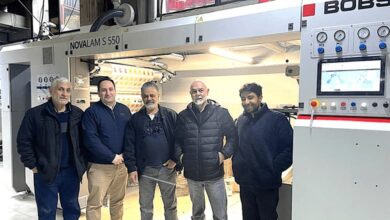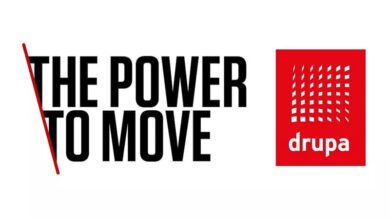Under Pressure
For nearly eighteen months now, the majority of Lebanese companies in all sectors combined have felt in one way or another the heavy burdens laid on them as a result of the Syrian crisis, currently in its third year.
Speaking geographically (let alone politically…), from its northern and eastern side Lebanon is engulfed by Syrian borders in every sense of the word, therefore a direct hit to the Lebanese economy was imminent and a predictable consequence of the current Syrian situation, yet a close observation shows that the Lebanese economy is holding up proportionally well considering the circumstances, with some major sectors mildly affected by the ongoing crisis, even when compared to other neighboring countries, particularly the Real estates and Banking sectors, to a certain extent these sectors are still standing firmly against the persisting tremors caused by the turmoil in Syria.
 The printing industry in Lebanon however is not one of those fortunate sectors, considering that only a year ago the export of printed material was estimated at over fifty percent of the total printed production of both commercial and packaging printing companies, mainly delivered by land freight with competitive cost to neighboring countries including Syria, Iraq, Jordan, Iran and the GCC members, in terms of figures that is over 50 percent of an annual turnover estimated for the printing industry in Lebanon at approximately 150 Million US$.
The printing industry in Lebanon however is not one of those fortunate sectors, considering that only a year ago the export of printed material was estimated at over fifty percent of the total printed production of both commercial and packaging printing companies, mainly delivered by land freight with competitive cost to neighboring countries including Syria, Iraq, Jordan, Iran and the GCC members, in terms of figures that is over 50 percent of an annual turnover estimated for the printing industry in Lebanon at approximately 150 Million US$.
Unfortunately, the expectations for this year concerning print exports are not encouraging, a situation that can only emphasize the strained consequences imposed in general on the Lebanese printing industry nowadays; printing companies who are mostly capable of handling the high capacity demands for quality printed materials but faced with the hard task of delivering their final product through the troubled Syrian borders.
Lebanese printers alternatively also export to North African markets as Egypt, Libya, Tunisia, Algiers and Morocco, delivery to such markets is done usually by sea freight. Despite the fact that some of these countries are already muddled in their internal problems, thus reducing their demands for printed material in general, even though one can realize the difference in number of printing jobs dispatched to African markets estimated at 20 percent of print exports, when compared to the more vigorous neighboring markets reached by land freight through the Lebanese-Syrian border estimated at 65 percent of print exports, leaving an approximate 15 percent of exports to European destinations and the USA.
On the other hand, due to the current situation in Syria, the mishap of some Syrian publishers unable to produce their publications locally is forcing them to bring their work to Lebanese printers, allowing these printers to compensate for some of the market drawbacks they are facing at the moment.
Certain Lebanese printers even went the extra mile in establishing printing press houses in different markets to attract businesses, particularly in Africa and the northern Iraqi region.
No doubt these are difficult times, but then it is mostly in difficult times that new ideas are forged, in this regard and irrespective of the current region instability, most Lebanese commercial printers like their peers worldwide are considering options which could sustain their businesses at least for the next decade, a time expected to be of tremendous technological changes for the global printing industry, with some massive portion of the printing business being ravaged and replaced by digital media.
The global economic crisis of 2008 might have slowed down a bit the developments of new digital technologies but this is not an indication that keeps commercial offset printers out of threat indefinitely.
So what will it be…? is it packaging, labels, digital printing, flexo, web to print, VLF, specialty printing or even the emerging 3D printing maybe, the spectrum of choices is wide, there is no reason to claim that the printing industry is not what it used to be in terms of revenue, it is simply changing and one need to adapt to these changes.
So far digital printing technology has managed to snatch a minimal portion of the global offset printing sector, a portion estimated at less than 15 percent according to certain analysis, demonstrating the continuous relevance of offset printing over other printing technologies, at least in the foreseen future. Survival is not just for the fittest as the saying goes, in the printing industry survival is for those who diversify.
After being once the printing hub of the Middle East and recognized internationally for its skilled experts, the pragmatic among us will say that the printing industry in Lebanon is condemned, unless the regional situation stabilizes and a strong Lebanese government is in place to rescue what is left of its ailing industries and lead the way to an economic salvation.
Others believe by intuition (and recent history facts) that regardless of how many times the Lebanese industry is knocked out, it always resurrects stronger than before. It could be the resilience nature and determination of the Lebanese people or for the skeptic among us it could be simply our Phoenician legacy at work, keeping us again and again experiencing an eternal rebirth from the ashes; we can only wonder when such rebirth is due next?
Well… only time will tell.





